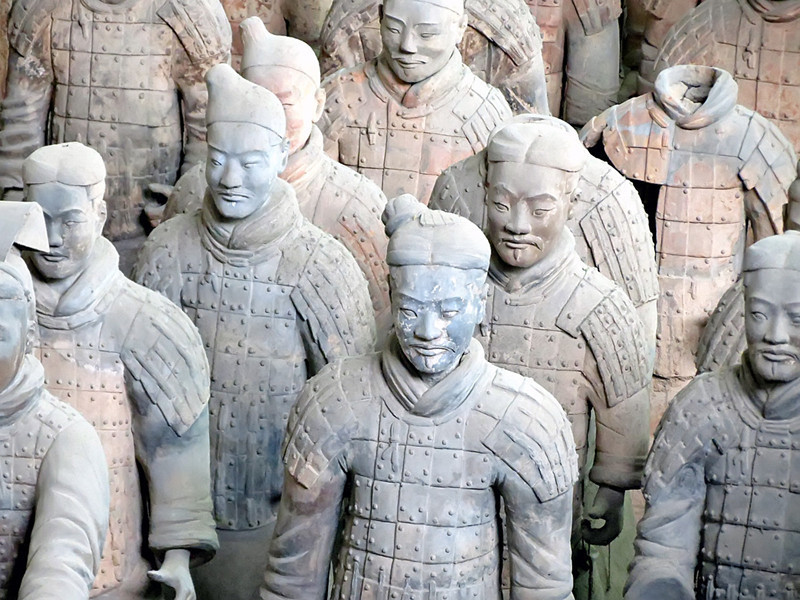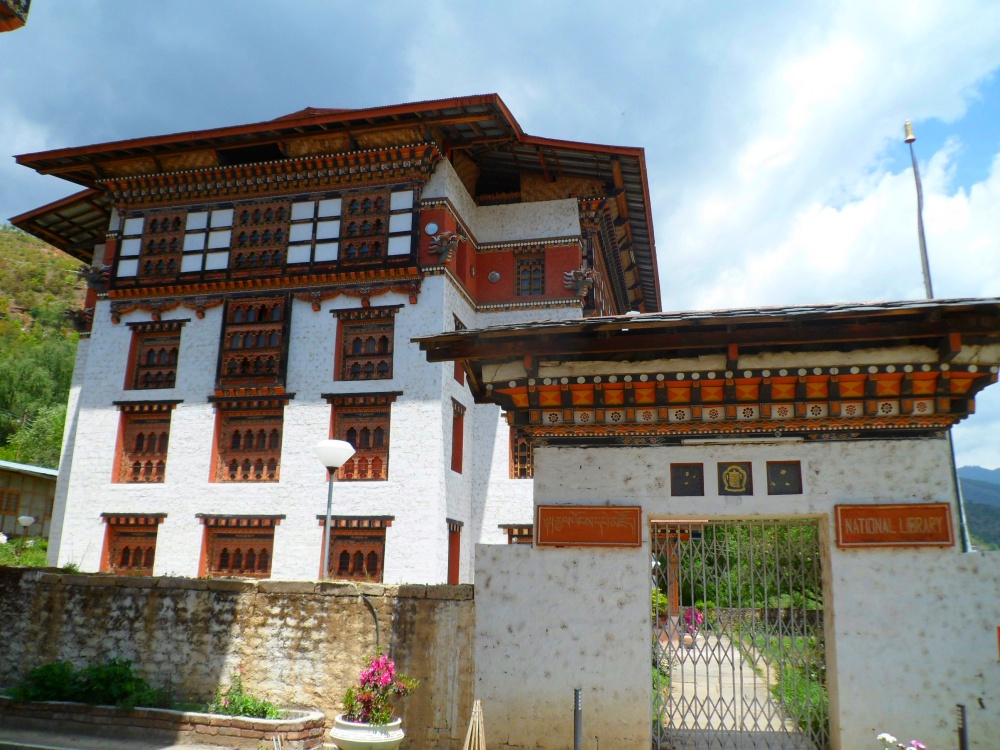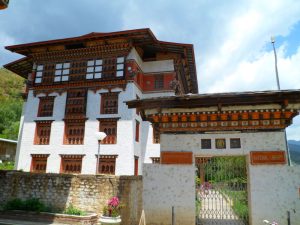National Library is a prominent centre of culture and religious side of Bhutanese and exhibits their exquisite way of living. The National library was established in 1967. The magnificent structure of the library is admirable and is located in the Kawajangsa area of Thimphu.
Location: PO Box 185, Pedzoe Lam, Thimphu, Bhutan
Key attractions: Prominent centre of culture and religion
How to reach: Can be easily reached by road
Places To Stay: Le Meridian Thimphu, Taj Tashi, Hotel White Tara
Timings: 9 AM to 5 PM
The National Library and Archives of Bhutan is one of the most important cultural institutions in the Kingdom of Bhutan. Located in Thimphu, the capital city, it plays a key role in preserving and promoting Bhutan’s rich cultural heritage, literature, and history. Established in 1967, the library is home to Bhutan's most significant collections of Buddhist manuscripts, historical records, and traditional Bhutanese texts, making it an essential destination for those interested in Bhutan's cultural and literary history.
Overview of the National Library and Archives of Bhutan
The National Library's primary mission is to collect, preserve, and provide access to Bhutan's historical documents, ancient manuscripts, and books that reflect the country's culture, religion, and heritage. The library houses an impressive array of Tibetan Buddhist scriptures, Bhutanese literature, and historical archives. The library’s collection helps both scholars and visitors gain a deeper understanding of Bhutan’s spiritual traditions, language, and history.
Key Features of the Library:
- Extensive Collection: The library holds thousands of rare and important Bhutanese texts, including works on Bhutanese history, culture, religion, and Buddhism.
- Preservation of Cultural Heritage: The library plays a vital role in preserving Bhutan’s literary heritage, particularly its ancient manuscripts and sacred texts.
- Modern and Traditional Architecture: The library building blends modern architecture with traditional Bhutanese designs. It features large windows and open spaces with intricate woodwork that reflects Bhutan's unique architectural style.
Highlights of the National Library and Archives of Bhutan
1. Bhutanese Manuscripts and Religious Texts
The most notable aspect of the National Library is its collection of Buddhist scriptures and manuscripts. These ancient texts cover a wide range of topics, from the history of Bhutan to Buddhist teachings and philosophy. The library houses an invaluable collection of Tibetan Buddhist texts, many of which are rare and difficult to find outside Bhutan.
2. Exhibitions on Bhutanese Culture and History
In addition to the written collections, the National Library regularly showcases exhibitions that highlight Bhutan's art, history, and religion. These exhibitions often feature displays of traditional Bhutanese artifacts, ancient scroll paintings, and manuscripts that give visitors a deeper understanding of the country’s cultural and spiritual life.
3. The Prayer Hall
The library includes a dedicated prayer hall that provides visitors with a glimpse into Bhutan's spiritual traditions. The hall is adorned with traditional artwork and peaceful ambiance, offering an ideal place for meditation and reflection.
4. Buddhist Art and Calligraphy
The National Library is also home to Bhutanese calligraphy and Buddhist art, showcasing the traditional methods of Bhutanese monks and artists in preserving texts and illustrations. The intricate designs and artwork are a testament to the kingdom’s artistic heritage.
The Role of the Library in Bhutanese Society
The National Library and Archives of Bhutan serves as a central hub for the preservation and study of Bhutanese culture. Its role extends beyond just being a depository of books and manuscripts; it also functions as a resource center for research, education, and cultural exchange.
- Cultural Preservation: The library ensures that Bhutan's traditional knowledge, religious practices, and cultural documents are not lost to time. It holds an important role in the preservation of oral traditions and Bhutanese folk literature.
- Educational Resource: The library serves as a resource for students, scholars, and researchers interested in studying Bhutanese culture, language, and Buddhism. It is a valuable educational space for anyone wishing to explore Bhutan’s rich history.
Visiting the National Library and Archives of Bhutan
The National Library and Archives of Bhutan is open to the public, and it is a must-visit place for anyone interested in Bhutanese culture. It offers a quiet and peaceful environment, ideal for studying, researching, or simply appreciating Bhutan's rich heritage. Visitors can explore the library's vast collection, view exhibitions, and learn about the history of Bhutan.
Opening Hours:
- Monday to Friday: 9:00 AM to 5:00 PM
- Saturday: Closed
- Sunday: Closed
Admission: Free (donations are welcome)
Facilities:
- Research and reading areas
- Prayer hall for meditation
- Exhibition spaces displaying cultural artifacts
- Staff available for assistance and information
How to Get to the National Library and Archives of Bhutan
The National Library and Archives of Bhutan is located in Thimphu, Bhutan's capital city. It is easily accessible from various parts of Thimphu and the surrounding region. Here are the key ways to reach the library:
1. By Air (to Paro International Airport)
If you’re arriving from outside Bhutan, you’ll most likely land at Paro International Airport, which is about 65 km (40 miles) from Thimphu. From there, you can travel to Thimphu by:
- Taxi: A 1.5 to 2-hour taxi ride from Paro Airport to Thimphu.
- Private car: Most hotels in Thimphu can arrange for pick-up from the airport.
2. By Road (From Other Cities in Bhutan)
Thimphu is easily accessible by road from other parts of Bhutan. Popular routes include:
- From Punakha: A 2.5 to 3-hour drive through the scenic Dochu La Pass.
- From Paro: A 1.5-hour drive from Paro to Thimphu.
- From Haa: Approximately a 3-hour drive from Haa to Thimphu.
3. Within Thimphu
Once you are in Thimphu, getting to the National Library is simple:
- The library is located near Dodeytshang, a short distance from major landmarks like Tashichho Dzong and Memorial Chorten.
- It is about a 15 to 20-minute taxi ride from Tashichho Dzong or 30 minutes by foot.
- Local taxis and buses are available to take you directly to the library.
Directions:
- From Memorial Chorten: A 20-minute taxi ride or 25-30 minute walk.
- From Tashichho Dzong: A 15-minute taxi ride or 20-minute walk.
The National Library and Archives of Bhutan offers a fascinating look at Bhutan’s rich cultural and spiritual heritage. With its extensive collection of manuscripts, religious texts, and cultural exhibitions, it is a must-visit destination for those interested in understanding Bhutan’s unique identity. Whether you are a researcher, a history enthusiast, or simply someone curious about Bhutan’s past, the library provides a serene and educational experience.


 Tours
Tours










 Destinations
Destinations Attractions
Attractions Golf
Golf Customize
Customize About Us
About Us Contact
Contact











